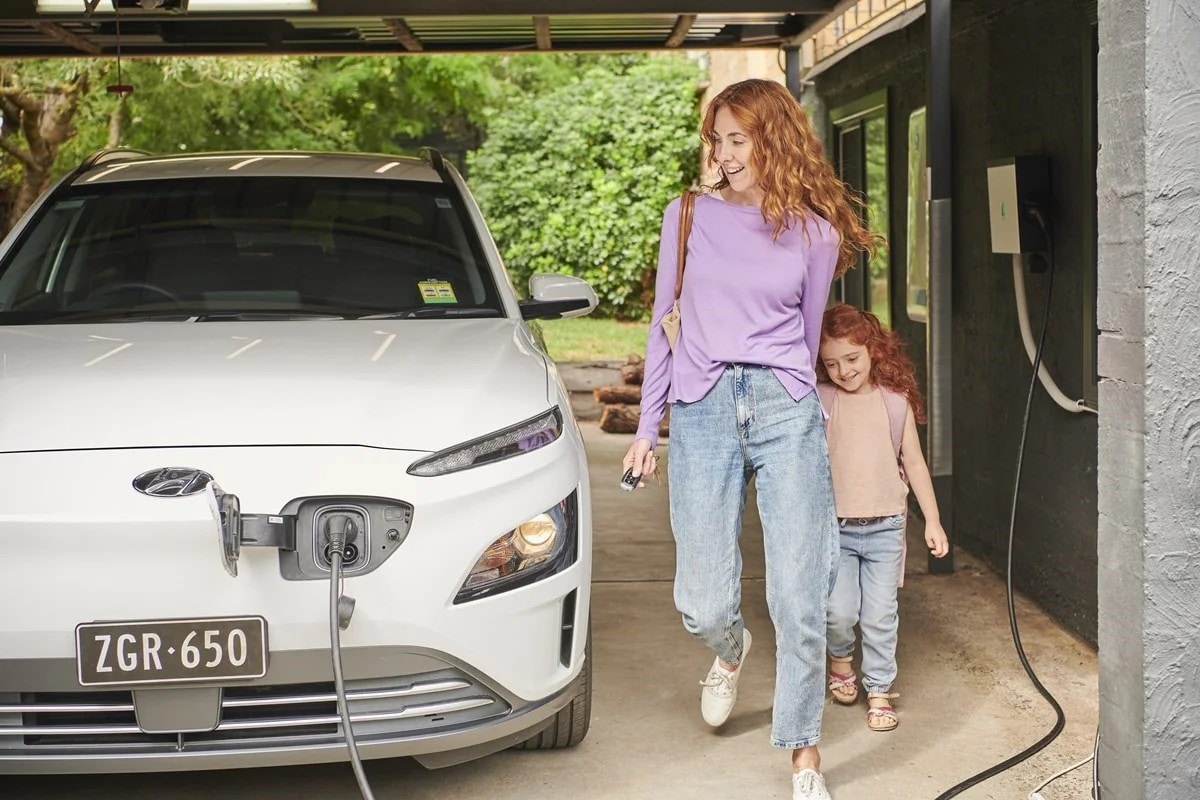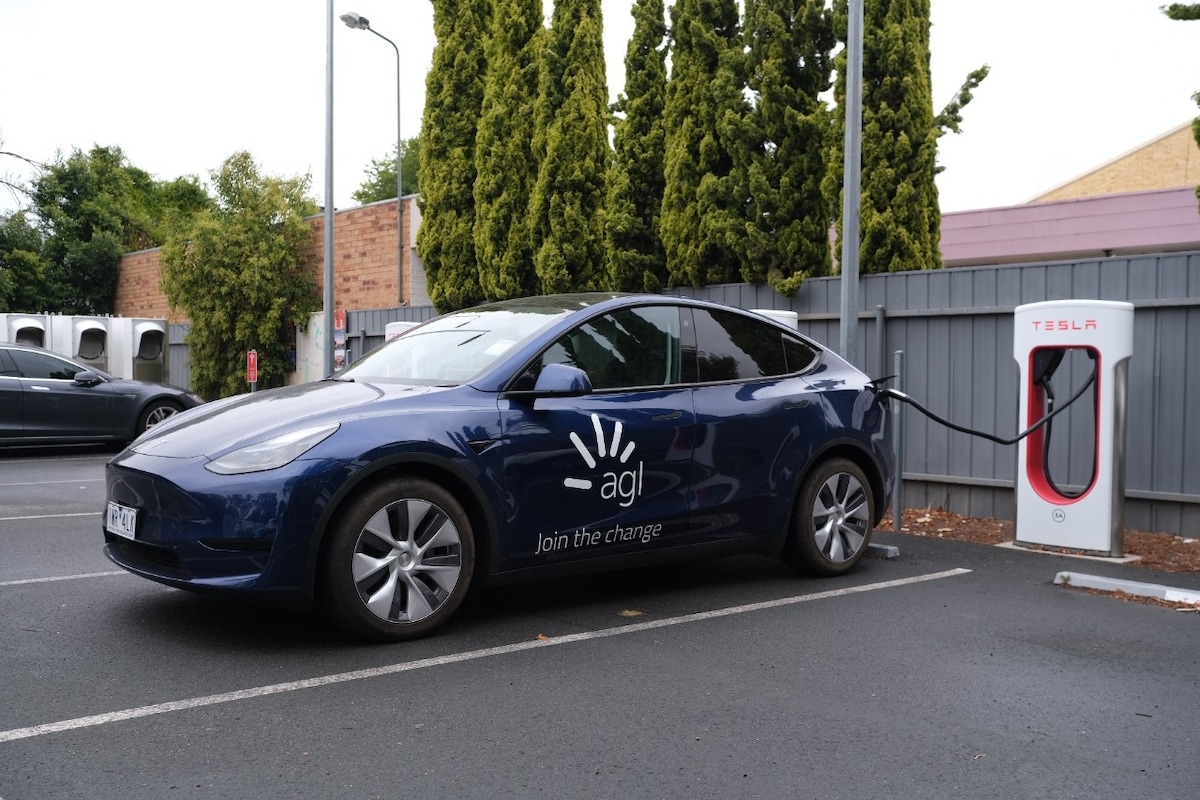Charging logistics and range are two of the biggest concerns hindering Australians from making the move to electric vehicles (EVs). But with at-home charging, there’s no need to pump the brakes on EVs.
EV charging at home
How do I charge my EV at home?
How you charge your EV depends on your preferences around charging speed, daily distance needs, and budget. There are two main ways to charge your EV at home:
- Through a charging cable that plugs into a standard power point, or
- An at-home EV charging station.
Plugging your car into a power point is the slow and steady charging option, giving you approximately 10-15kms (around 2.3-3.5kW) of travel out of every charging hour. But this option shouldn’t require additional investment as most new EVs come with a charging cable.
If you’re after a faster charge, you’ll need an at-home charging station – also referred to as ‘mode 3’ / ‘level 2’ EVSE (Electric Vehicle Supply Equipment). These can fully charge most EVs overnight. Some have advanced features including:
- Solar only modes (charging your EV only with excess solar that would otherwise be fed back to the grid);
- Load balancing to ensure it doesn't trip a circuit; and
- Mobile apps that let you set charging modes and schedules, and access information about your charging costs and behaviours.
This option requires additional investment and you’ll need a qualified electrician to install the equipment.
I live in an apartment. Can I install an EV charger?
Yes, you can. But if you live in a strata building you will need your body corporate’s permission to install a charger. Refer to these government guides for more information.
Can I charge my EV through solar?
Yes, you can. But you will need a solar enabled charger. You’ll also need to be aware of the amount of power your solar produces, as your charger will draw power from the grid if there isn’t enough solar power available. Charging your EV in the morning or during the day will help you get the most charge out of your solar.
Some smart chargers have solar only modes that ramp charging speeds up and down depending on the availability of excess solar.
What is the difference between a tethered and untethered charger?
With a tethered charger, the cable that connects to your car is permanently attached to the charging station. With untethered chargers, the cable can be disconnected from both ends (the car and the charger).
Untethered cables can be useful to leave in your car to use at public charging stations, if your vehicle didn't come with one.
AGL’s home chargers have both tethered and untethered options.
How long does it take to charge an EV?
This depends on how you charge your car and the type of cable you use. There are three levels of charging available:
- Level 1 charging cables allow you to plug into a standard power point, giving you around 10-15km of charge per hour.
- A level 2, single phase 7.2kW charging unit with a 230V AC connection will charge your EV faster than Level 1. Charging time from empty to full depends on the size of your battery – but the typical charge rate is from 21.6 - 66km every hour.
- Level 3 chargers can add around 350km of range in as little as 15 minutes, depending on the type of car and the size of its battery. These superchargers are more expensive and power-hungry so not suitable (or needed) at home. If you need to charge your EV fast, you can find a public level 3 charger using this handy map.
How much does it cost to charge an EV at home?
The cost depends on your electricity prices and when you charge your car. If you have a “time of use” electricity tariff, your electricity prices will vary at different times of the day – this means you could reduce your charging costs by avoiding charging your car during peak times. Or if you have solar and a solar-enabled charger, you could manage your costs by charging when the sun is shining during the day. Shopping around for the best electricity plan can also reduce costs.
When is the best time to charge my EV?
The optimal time to charge your car depends on a range of factors, including your electricity tariff type, whether you have solar, and your personal motivations (e.g. whether you are mainly aiming to reduce charging costs, limit your carbon footprint, or both). As explained above, if you are on a “time of use” tariff, you may want to avoid charging during the peak rate period under your electricity plan (this might be around 3pm to 9pm, depending on your tariff).
If you’re using solar to charge your EV, it’s best to do it during the day to maximise sunlight hours, depending on the capacity of your solar system. But if you have a solar battery, you may be able to charge any time – granted the battery has enough power stored. Your retailer might also offer a special rate for EV charging at certain times - check out AGL’s Night Saver EV plan and see how you can save while you sleep.
It’s important to note that the energy on the grid also referred to as “the grid mix” generally has more renewables during the day. This means even if you don’t have solar yourself you can indirectly benefit from all the solar excess on the grid by optimising your charging to avoid peak windows and charge at optimal times like early in the day.
Do I need to update my power to three-phase to charge my EV?
For most people with common household appliances, single phase power will be enough to charge an EV. But if you have more powerful appliances, a large solar system over 10kW or multiple EVs, upgrading to three-phase power could be beneficial.
Most Australian households run on single phase. You can check the type of power used in your home by looking in your fuse box. If there are three switches under your main switch, you’re on three-phase.
How much could you save by going electric?
Get your personalised energy bill savings estimates.



